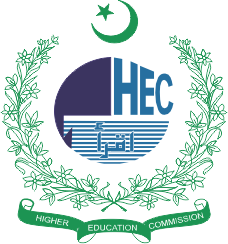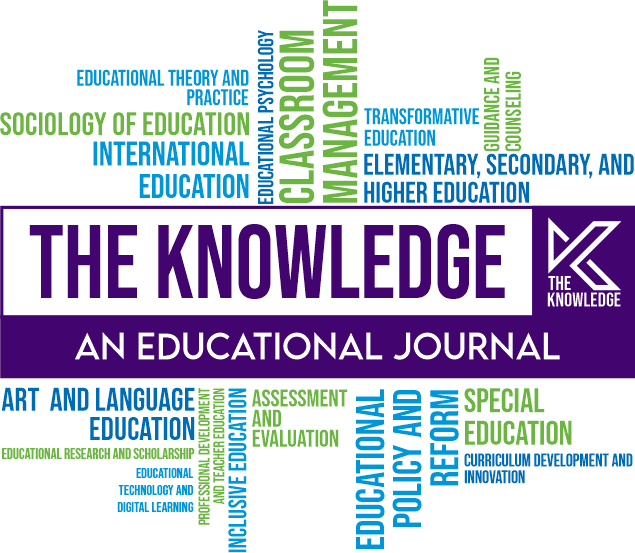Analyzing Quality of Educational Practices and Students' Social-Emotional Learning in Public Elementary Schools
DOI:
https://doi.org/10.63062/tk/2k25a.41038Keywords:
Quality Education Practices, Social Emotional Learning, Elementary Level StudentsAbstract
This study explores the effect of Quality Education Practices (QEP) on the emotional Learning (SEL) of students in public elementary schools in the province of Punjab, Pakistan. The objectives were to i) find out the QEP in public elementary schools, ii) explore the students' SEL level, and iii) examine the relationship of QEP with students' SEL. Major research questions were: i) what are the practices for quality education in public elementary schools? What is the level of SEL of students in public elementary schools? Is there any relationship between QEP and students' SEL? The study was descriptive, and the design was correlational. A total of 200 headteachers, 1688 teachers and 4011 students of the 8th class were selected through a multistage random sampling technique. Six self-developed five-point rating scales were used. To get the opinion from respondents. A major conclusion was that most public elementary schools in Punjab have high levels of overall QEP and SEL. A strong positive relationship was found between overall QEP and overall SEL of students, and QEP strongly predicts the SEL of students. It was recommended that the Directorate of Staff Development of Punjab introduce training programs for teachers to comprehend and improve the SEL of students.
References
Anderson, G. (2006). Assuring quality/resisting quality assurance: Academics’ responses to ‘quality’ in some Australian universities. Quality in Higher Education, 12(2), 161-173. https://doi.org/10.1080/13538320600916767
Arjomandi, M., Kestell, C., & Grimshaw, P. (2009). An EFQM Excellence Model for Higher Education Quality Assessment. Proceedings of the 20th AAEE Australasian Association for Engineering Education Conference: Engineering the Curriculum. https://www.academia.edu/download/29666443/ae090149.pdf
Awan, A. (2020). Comparative study of the quality of Education in public and private schools. Global Journal of Management, Social Sciences and Humanities vol-6(2). 537-558. DOI: https://orcid.org/0000-0001-5767-6229
Baird, J. (2006). Beyond professionalization: enhancing the governance culture for Australian university governing boards. Tertiary Education & Management, 12(4), 297-309. https://doi.org/10.1007/s11233-006-9006-3
Bar-On, R. 2005. The Impact of Emotional Intelligence on Subjective Well-being. Perspectives in Education, 23(1), 41–62. https://eric.ed.gov/?id=EJ692494
Bayraktar, E., Tatoglu, E., & Zaim, S. (2008). An instrument for measuring the critical factors of TQM in Turkish higher education. Total Quality Management, 19(6), 551-574. https://doi.org/10.1080/14783360802023921
Bibi, R. (2011). Role of School Councils in the Improvement of Elementary Girls Schools in Rawalpindi. Unpublished M Phil’s thesis, Allama Iqbal Open University, Islamabad. http://library.aiou.edu.pk/cgi-bin/koha/opac-detail.pl?biblionumber=58966
Bruno, L., & Garcia-Varela, A. B. (2023). Motivation and Learning Conceptions That Matter When Considering Global Citizenship Education. Educational Studies Review, 2(43), 5-22. http://dx.doi.org/10.12775/PBE.2023.025
Cohen, J. (2006). Social, Emotional, Ethical, and Academic Education: Creating a Climate for Learning, Participation in Democracy, and Well-being. Harvard Educational Review, 76(2), 201–237, 285. https://pdfs.semanticscholar.org/05a7/815534eb03a915802591a83796ee0e75eed7.pdf
Collaborative for Academic, Social, and Emotional Learning (CASEL) (2015). Social and emotional learning (SEL) and student benefits: Implications for the safe schools/healthy students core elements. Chicago۔ http://files.eric.ed.gov/fulltext/ED505369.pdf
Darling-Hammond, L. (2015). The flat world and education: How America's commitment to equity will determine our future. Teachers College Press. https://www.cde.state.co.us/sites/files/documents/gt/download/pdf/summer2012_jspfinal_v2.pdf
DeJaeghere, J., & Murphy-Graham, E. (eds.) (2022). Life Skills Education for Youth, Young People and Learning Processes in School and Everyday Life. https://doi.org/10.1007/978-3-030-85214-6_2
DSD, (2014). Teachers’ Guide: Concepts & Techniques. A training manual for the Professional Development of Quality Education. Directorate of Staff Development, Lahore Punjab. Pakistan.
Durlak, J. A., Weissberg, R. P., Dymnicki, A. B., Taylor, R. D., & Schellinger, K. B. (2011). The impact of enhancing students’ social and emotional learning: A meta‐analysis of school‐based universal interventions. Child Development, 82(1), 405-432. https://doi.org/10.1111/j.1467-8624.2010.01564.x
Flores-Molina, J. C. (2011). A total quality management methodology for universities (Doctoral dissertation, Florida International University). https://digitalcommons.fiu.edu/etd/375/
Gehlbach, H. (2015). User Guide Social Emotional Learning. Panorama Education https://dpi.wi.gov/sites/default/files/imce/sspw/pdf/seluserguide.pdf
Gibbs, G. (2010). Dimensions of quality. https://www.sparqs.ac.uk/ch/E4%20Dimensions%20of%20Quality.pdf
Government of Punjab. (2018). The New Deal 2018-2023: Transforming School Education in the Punjab. http://itacec.org/document/2019/april/The_New_Deal2018.pdf
Govt of the Punjab. (2019). Punjab Education Sector Program 2019/2020, 2023/2025. https://schools.punjab.gov.pk/system/files/Punjab%20Education%20Sector%20Plan%20(2019-20%20to%202023-24).pdf
Gueldner, B. A., Feuerborn, L. L., & Merrell, K. W. (2020). Social and emotional learning in the classroom: Promoting mental health and academic success. Guilford Publications. https://lccn.loc.gov/2020012307
Haider, S. I. (2008). Pakistani teachers’ attitudes towards inclusion of students with special educational needs. Pakistan Journal of Medical Sciences, 24(4), 632-6. https://pjms.com.pk/issues/julsep08/pdf/teacher.pdf
Hattie, J. (2018). Hattie ranking: 252 influences and effect sizes related to student achievement. Visible Learning. https://visible-learning.org/hattie-ranking-influences-effect-sizes-learning-achievement/
Hough, H., Kalogrides, D. and Loeb, S. (2017). Using Surveys of Students’ Social-Emotional Learning and School Climate for Accountability and Continuous Improvement. Policy Analysis for California Education, Stanford, CA, available at: http://edpolicyinca.org/sites/default/files/SELCC_report.pdf
Humphrey, N. (2013). Social and emotional learning: A critical appraisal. Torrossa.com. 1-84. https://www.torrossa.com/en/resources/an/5017606
Hussain, S. (2004). Effectiveness of teacher training in developing the professional attitude of prospective secondary teachers. [Unpublished Master’s thesis]. University of Arid Agriculture, Rawalpindi, Pakistan. https://www.semanticscholar.org/paper//67c104bdd03c61f6bffa932fbd052034f3750857
Hussain, S., Ahmad, M., & Altaf, S. (2023) Evaluation of Effect of Quality Standards on Quality of Education in Public and Punjab Education Foundation Funded Schools at Secondary Level. Journal of Contemporary Teacher Education, 7(2023), 1-20. https://ojs.aiou.edu.pk/index.php/jcte/article/download/184/1830
Javed. M, Ishaq. B, & Javed. M (2021) Quality Education and Educational Facilities in Secondary Schools: A Nexus. Pakistan Journal of Humanities and Social Sciences. 9(3), 2021, 495–504. https://doi.org/10.52131/pjhss.2021.0903.0154
Kuo, Y., Casillas, A., & Allen, J. (2019). Examining Moderating Effects of Social Emotional Learning Factors on Achievement Gains. ACT Research & Policy, Technical Brief. https://files.eric.ed.gov/fulltext/ED596121.pdf
Lipnevich, A. A., Bergold, S., & Preckel, F. (2022). The Effect of Noncognitive and Cognitive Skills on Grade Point Average. Journal of Intelligence, 10(4), 107. https://doi.org/10.3390/jintelligence10040107
Loeb, S., Christian, M.S., Hough, H., Meyer, R.H., Rice, A.B. and West, M.R. (2018), School effects on social-emotional learning: findings from the first large-scale panel survey of students. Policy Analysis for California Education, Berkeley, CA.
Lopes, P. N., & Salovey, P. (2004). Toward a broader education: Social, emotional, and practical skills. In J. E. Zins, R. P. Weissberg, M. C. Wang, & H. J. Walberg (Eds.), Building academic success on social and emotional learning: What does the research say? (pp. 76–93). New York: Teachers College. https://www.academia.edu/download/59807495/Toward_a_Broader_Education_Social_Emotio20190620-19554-uautzz.pdf
Malik, A. B. (2017). Preface: In Training Manual for Induction Training. Directorate of Staff Development, Lahore, Punjab. Pakistan.
Matson, J. L. (ed.), (2017). Handbook of Social Behavior and Skills in Children, Autism and Child Psychopathology Series. https://doi.org/10.1007/978-3-319-64592-6_11
McAleese, M., Bladh, A., Berger, V., Bode, C., Muehlfeit, J., Petrin, T., Schiesaro, A., & Tsoukalis, L. (2013). Improving the quality of teaching and learning in Europe’s higher education institutions. High-Level Group on the Modernisation of Higher Education, Report to the European Commission, Luxembourg, 978-992.
Meyer, K & Wurdinger, S. (2016). Students’ Perceptions of Life Skill Development in Project-Based Learning Schools. Journal of Educational Issues. 2. 91. https://doi.org/10.5296/jei.v2i1.8933
Ministry of Federal Education and Professional Training Pakistan (2016). Minimum Standards for Quality Education in Pakistan. Islamabad: Ministry of Federal Education and Professional Training. http://moent.gov.pk/mopttm/userfiles1/file/Minimum%20Standards%20for%20Quality%20Education%20in%20Pakistan.pdf
OECD. (2018). Equity and quality in education: Supporting disadvantaged students and schools. OECD Publishing. https://doi.org/10.1787/9789264130852-en
Parveen, K., & Tran, P. Q. (2020). Practical problems for low-quality education and steps needed for investment in public schools of Pakistan. Journal of Social Sciences Advancement, vol 1(01). https://doi.org/10.52223/JSSA20-010101-01
Payton, J. W., Wardlaw, D. M., Graczyk, P. A., Bloodworth, M. R., Tompsett, C. J., & Weissberg, R. P. (2000). Social and emotional learning: A framework for promoting mental health and reducing risk behaviour in children and youth. Journal of School Health, 70(5), 179-185. https://doi.org/10.1111/j.1746-1561.2000.tb06468.x
Reid, J. A. (2011). Doing it by the numbers? Educational research and teacher education. The Australian Educational Researcher, 38, 383-400. https://doi.org/10.1007/s13384-011-0034-8
Sá, M. J., & Serpa, S. (2020). COVID-19 and Noncognitive Skills in Primary Education. World, 1(2), 119-128. https://doi.org/10.3390/world1020010
Salam, A. (2015). Input, Process and Output: system approach in education to assure quality and excellence in performance. Bangladesh Journal of Medical Science 14(01), 1-2. http://dx.doi.org/10.3329/bjms.v14i1.21553
Shahid, M. I., Saleem, K., & Farooqi, M. T. K. (2023). Understanding the School Climate Contributions to Students’ Socialization. Bulletin of Business and Economics, 12(3), 278–282. https://doi.org/10.61506/01.00033
Zins, J. E., Bloodworth, M. R., Weissberg, R. P., & Walberg, H. J. (2007). The scientific base linking social and emotional learning to school success. Journal of Educational and Psychological Consultation, 17(2-3), 191-210. https://doi.org/10.1080/10474410701413145




